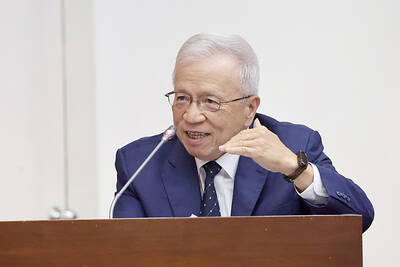The nation last month saw its first decline in the number of manufacturing sector employees since July, when the US-China trade dispute began, but the Directorate-General of Budget, Accounting and Statistics (DGBAS) yesterday said it would take more time to determine whether trade issues are affecting the labor market.
The DGBAS’ remarks came after it reported that the unemployment rate edged down to 3.75 percent last month, the lowest in October for 18 years and a decrease of 0.11 percentage points from a month earlier.
For the first 10 months, the average unemployment rate was 3.71 percent, also the lowest in 18 years for the same period, the DGBAS said at a news conference in Taipei.
After seasonal adjustments, the unemployment gauge was 3.7 percent last month, flat from a month earlier.
The rate this year had stayed between 3.67 percent and 3.7 percent prior to last month, DGBAS said.
“The labor market is still very stable, given that the seasonally adjusted unemployment rate remained flat and the number of employed people advanced by 11,000 to 11.46 million last month,” DGBAS Census Department Deputy Director Pan Ning-hsin (潘寧馨) said.
However, the number of people employed in local industries decreased by 3,000 last month, including 1,000 from the manufacturing sector, the DGBAS said.
The number of manufacturing sector employees was on the rise earlier in the year, except for February due to the Lunar New Year holiday, it said.
Despite the decline in the manufacturing sector, the DGBAS said it was not worried, as the number of people employed in the sector increased by 4,000 in the July-to-October period.
“The decline might be a signal that the manufacturing sector took a hit from the trade dispute, but we cannot jump to a conclusion right now,” Pan said, adding that the DGBAS would monitor the situation closely.
The report showed that among newly employed people last month, 54.5 percent were aged 45 to 64, while 36 percent were aged 15 to 24.
While the number of employees in the manufacturing sector — which accounted for 26.8 percent of total employees — decreased last month, the number of employees in the service sector expanded by 14,000 to 6.81 million, or 59.4 percent of the overall workforce.
The rise in service-sector employment came as workers moved from the manufacturing sector, the DGBAS said.

JITTERS: Nexperia has a 20 percent market share for chips powering simpler features such as window controls, and changing supply chains could take years European carmakers are looking into ways to scratch components made with parts from China, spooked by deepening geopolitical spats playing out through chipmaker Nexperia BV and Beijing’s export controls on rare earths. To protect operations from trade ructions, several automakers are pushing major suppliers to find permanent alternatives to Chinese semiconductors, people familiar with the matter said. The industry is considering broader changes to its supply chain to adapt to shifting geopolitics, Europe’s main suppliers lobby CLEPA head Matthias Zink said. “We had some indications already — questions like: ‘How can you supply me without this dependency on China?’” Zink, who also

At least US$50 million for the freedom of an Emirati sheikh: That is the king’s ransom paid two weeks ago to militants linked to al-Qaeda who are pushing to topple the Malian government and impose Islamic law. Alongside a crippling fuel blockade, the Group for the Support of Islam and Muslims (JNIM) has made kidnapping wealthy foreigners for a ransom a pillar of its strategy of “economic jihad.” Its goal: Oust the junta, which has struggled to contain Mali’s decade-long insurgency since taking power following back-to-back coups in 2020 and 2021, by scaring away investors and paralyzing the west African country’s economy.

BUST FEARS: While a KMT legislator asked if an AI bubble could affect Taiwan, the DGBAS minister said the sector appears on track to continue growing The local property market has cooled down moderately following a series of credit control measures designed to contain speculation, the central bank said yesterday, while remaining tight-lipped about potential rule relaxations. Lawmakers in a meeting of the legislature’s Finance Committee voiced concerns to central bank officials that the credit control measures have adversely affected the government’s tax income and small and medium-sized property developers, with limited positive effects. Housing prices have been climbing since 2016, even when the central bank imposed its first set of control measures in 2020, Chinese Nationalist Party (KMT) Legislator Lo Ting-wei (羅廷瑋) said. “Since the second half of

Taiwan Semiconductor Manufacturing Co (TSMC, 台積電) received about NT$147 billion (US$4.71 billion) in subsidies from the US, Japanese, German and Chinese governments over the past two years for its global expansion. Financial data compiled by the world’s largest contract chipmaker showed the company secured NT$4.77 billion in subsidies from the governments in the third quarter, bringing the total for the first three quarters of the year to about NT$71.9 billion. Along with the NT$75.16 billion in financial aid TSMC received last year, the chipmaker obtained NT$147 billion in subsidies in almost two years, the data showed. The subsidies received by its subsidiaries —